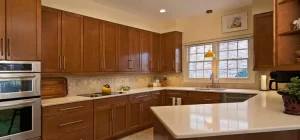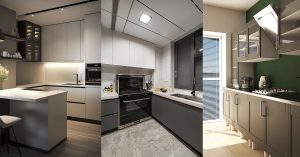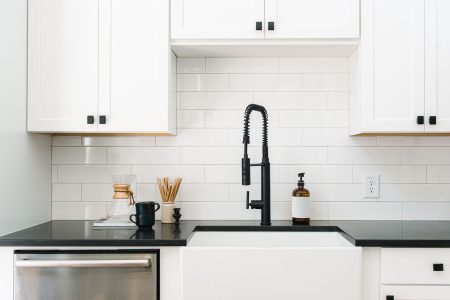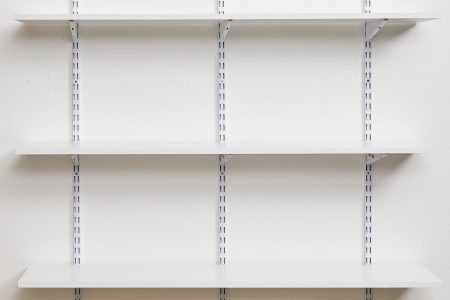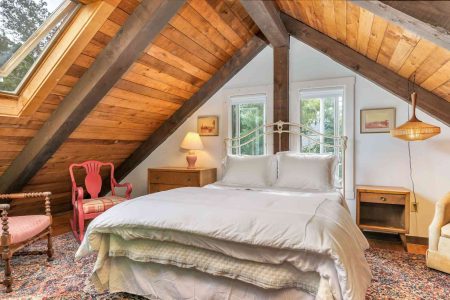Natural light in a home is always better than artificial light. It bathes your room in a rich full spectrum hue that light bulbs can only hope to duplicate and it increases your body’s feel-good serotonin levels. Best of all, natural light will not come due at the end of the month with the power bill. It’s free.
Many homes were not built with natural light in mind. Short of picking up your house and turning it in the direction of the sun—or altogether relocating it to a sunnier location—there are a few remodel projects you can do that significantly increase interior natural light.
-
01
of 09Paint the Home’s Eaves White
The overhangs created by your roof are eaves or soffits. Either they are left as open eaves or they are covered up with a horizontal soffit.
In any case, this section reflects natural light and sends it into your home. Painting your eaves white is one little-known way to boost natural light in every room of your home.
Even if your house exterior is a different color, you can still paint your eaves white-only. Because of how eaves angle toward the house, the curbside appearance will not be affected. You will primarily see them only from within the house.
-
02
of 09Use Lighter, Brighter Interior Wall and Ceiling Paints
Painting walls white or another light color may seem like an easy way to add more light, and it is.
Interior wall color is the number one way to reflect natural light back into your room. Light Reflectance Value, or LRV, can range from near to 100-percent for pure white down to close to 0-percent for black. All colors in-between will have greater or lesser LRV.
White is the brightest. Nothing is brighter than white. If you really don’t like white but really want more light, look into whites that have underlying color tones. White comes in a huge range of subtly different shades.
-
03
of 09Turn Your Walls Into Mirrors With Higher Gloss Paint
The higher the gloss level of the interior paint, the more light-bounce you’ll have indoors. By using glossier paint for your walls, you give them a mirror-like effect. And as everyone knows, mirrors reflect light.
At the other end of the reflective scale is flat or matte paint. With its highly porous, velvet-like texture, flat or matte gloss paint soaks up light and cuts down on its reflective quality.
This does not mean that you must use high-gloss paint, though you can if you wish. It means going one notch up in a glossier direction. So, if you love matte, try eggshell. If you love eggshell sheen, try semi-gloss. If you have a remarkably dark room, you may want to consider glossy paint for your walls, even though it is not typically used on walls. Just be aware that more gloss means more glare from strong light, especially artificial light.
-
04
of 09Use Glass or Highly Reflective Tiles
Glass tiles are the next best thing to installing mirrors on your kitchen or bathroom backsplash. In the right light, glass tiles reflect close to 100-percent of the light that hits them.
Second to glass, install highly glossy ceramic tiles for a nearly equal reflective effect. Compare low-reflection (and trendy) backsplash materials like concrete or pallet wood against even an ordinary white subway tile backsplash. In terms of light reflection, the subway tile is superior to many other materials. And at just a few dollars per square foot, it is far cheaper, too.
For maximum reflection, turn up the light even more and install metallic backsplash tiles.
Continue to 5 of 9 below. -
05
of 09Replace Wall Space With Glass Blocks
Not the easiest fix but an effective one, replacing sections of your exterior wall with glass block brings in a fair amount of natural light where otherwise no light would be entering your home.
Glass block is not a structural replacement for a wall stud system, so headers must be installed over the block sections, as you would with any window or door unit.
-
06
of 09Install Skylights in Your Ceiling
Skylights are an amazingly effective way of pulling in natural light. In fact, skylights are often called windows for the roof. Not only do skylights present as much glazing area as a medium-sized window, but they also face upward, where the sun is located.
Skylights bring in more consistent light than most windows because skylights are less likely to be shadowed by outdoor objects, and sunlight reflected off of clouds comes right into the house.
-
07
of 09Add Reflective Room Features
If you’ve ever walked into a sunlit room with a chandelier, you’ll know how bright they can be. When sunlight reflects on a chandelier, it sends more light into the room. And the chandelier doesn’t even need to be turned on for this to happen.
But you don’t need to install a chandelier in your home to achieve this effect. Think in terms of any shiny, glossy, and reflective room elements. Add mirrors, sconces, and shiny cabinet pulls to increase natural light, even incrementally.
-
08
of 09Install Sun Tubes
If you don’t have the space for a skylight, consider a sun tube, a tubular daylighting device that’s a less expensive, easy-to-install alternative to skylights.
The chief difference between sun tubes and conventional skylights is that sun tubes don’t need a light shaft. With conventional skylights, an opening is cut into the roofline and another opening is cut into the ceiling. Connecting the two is a light shaft, usually built with two-by-fours, drywall, and insulation. A light shaft drives up the price of the skylight. Plus, a light shaft can only be built in a straight line—a problem for attics that have a lot of HVAC vents and other obstructions.
Sun tubes come with their own light shafts: tubes that snap together and can even work around attic obstructions. Sun tubes bring in less natural light than skylights. But multiple sun tubes within a room can, in the aggregate, produce as much natural light as a single conventional skylight.
Continue to 9 of 9 below. -
09
of 09Paint Ceilings White or Light Colors
Most ceilings are white for a reason: White reflects light. And since ceilings often go unnoticed when surveying a room’s decor, there’s no design penalty for going with white.
Flat white is preferred over glossier sheens because a matte finish reduces glare, and ceilings don’t need the washability of glossier paint because they don’t get touched regularly as walls and trim do. So, even though glossier paint is typically a way to increase natural light in a room, ceilings are the exception.
Read the full article here

